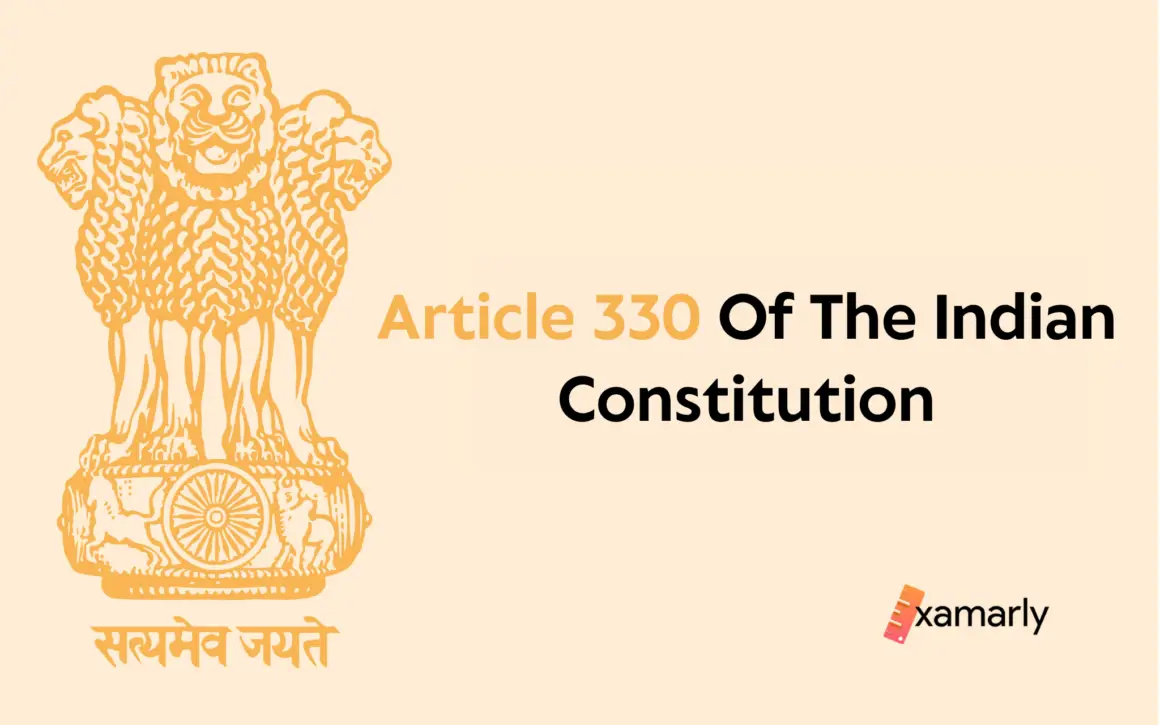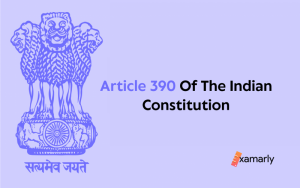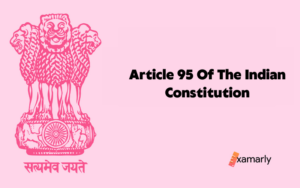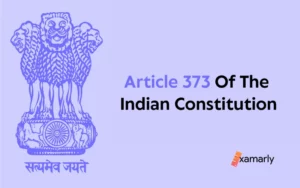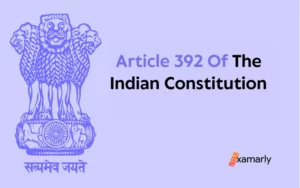Article 330 of the Indian Constitution provides for reservation of seats in the House of the People (Lok Sabha) and in the Legislative Assemblies of the States for the Scheduled Castes and the Scheduled Tribes.
It also lays out the procedure for the allocation of these reserved seats among different states and union territories.
The article also provides that the total number of seats to be reserved in the Lok Sabha and the Legislative Assemblies of the States shall not be more than the prescribed percentage of the total number of seats allotted to that State/UT in the House, and those reservations are for ten years.
This provision of special representation can, however, be amended for extension of reservations through a constitutional amendment.
Read along to have a thorough understanding of Article 330 of the Indian Constitution, its clauses, challenges & objectives.
- Article 330 Of The Indian Constitution – Explained
- Article 330 Of The Indian Constitution: Obstacles To Motives
- Summary
- FAQs On Article 330 Of The Indian Constitution
- What is the purpose of Article 330 of the Indian Constitution?
- How is the reservation of seats for Scheduled Castes and Scheduled Tribes carried out under Article 330?
- Is there a limit on the number of seats that can be reserved for Scheduled Castes and Scheduled Tribes?
- What are the challenges facing the implementation of Article 330?
- How does Article 330 ensure the socio-economic upliftment of Scheduled Castes and Scheduled Tribes?
Article 330 Of The Indian Constitution – Explained
- Reservation of seats in the Lok Sabha (House of the People) will be done for-
- Scheduled Castes, and
- Scheduled Tribes.
- The number of seats reserved for Scheduled Castes or Scheduled Tribes in any state or union territory shall be proportional to their population in that state or union territory, as compared to the total population of that state or union territory, as nearly as possible.
- In spite of the provisions in clause 2, a minimum proportion of seats in the Lok Sabha (House of the People) shall be reserved for the Scheduled Tribes in the autonomous districts of Assam, this proportion is based on the population of the Scheduled Tribes in these districts as compared to the total population of the state.
In this article & Article 332 of the Indian Constitution, the term “population” refers to the population as per the last preceding census, the figures of which have been published.
In simple words, the reference for determining the proportion of seats will be the last census conducted whose figures have been published until the relevant figures of the first census taken after the year 2026 have been published.
The last census used will be the 2001 census.
Article 330 Of The Indian Constitution: Obstacles To Motives
Apart from the benefits of reservation, the following challenges lay in path to the objectives of Article 330 of the Indian Constitution:
- Implementation: Although the provisions for reservation of the Scheduled Castes and Scheduled Tribes is meant to provide these groups political representation in government, there have been difficulties in making sure that the reservation of jobs are effectively carried out.
- System of Quotas: The quota system has been criticised, with some suggesting that it can foster a culture of dependency while others stating that it can prevent members of certain groups from being motivated to work hard and succeed on their own merits.
- Misuse: Reservation regulations are frequently abused by politicians, bureaucrats, and members of the “upper caste” in order to gain access to seats and positions of power.
- Leakages and Exclusion of the Needy: On occasion, due to administrative inefficiency, ignorance, and corruption, seats and positions designated for the Scheduled Castes and Scheduled Tribes do not reach the people who actually need them.
- Socio-Economic Upliftment: Despite the misgivings, there are still concerns about the upliftment of these groups as they continue to trail behind other groups in terms of income, education, and general well-being.
- Insufficient Subcaste Representation in SC/ST: Substantial requests for sufficient representation of diverse subcastes within the Scheduled Castes and Scheduled Tribes have been made due to the underrepresentation and marginalisation of many of these groups within their own communities.
Apart from these, the special provisions of Article 330 of the Indian Constitution doesn’t apply to the Scheduled Tribes of Nagaland, Meghalaya, Arunachal Pradesh and Mizoram as these states have a predominant tribal population.
Summary
Article 330 of the Indian Constitution deals with the reservation of seats for Scheduled Castes and Scheduled Tribes in the House of the People (Lok Sabha) and Legislative Assemblies of the States.
The article also states about the limit for representation by keeping the number of seats in proportion to the population of the concerned State/Union Territory.
This special provision of reservation for the Scheduled Castes and the Scheduled Tribes is aimed at providing them adequate representation in the government and in ensuring their socio-economic upliftment.
You Might Also Like To Read: Article 331 of The Indian Constitution.
FAQs On Article 330 Of The Indian Constitution
What is the purpose of Article 330 of the Indian Constitution?
Article 330 of the Indian Constitution provides for the reservation of seats for Scheduled Castes and Scheduled Tribes in the House of the People (Lok Sabha) and Legislative Assemblies of the States.
It is intended to provide representation for these groups in government and ensure their socio-economic upliftment.
How is the reservation of seats for Scheduled Castes and Scheduled Tribes carried out under Article 330?
The seats for Scheduled Castes and Scheduled Tribes are reserved in proportion to their population in a specific State/Union Territory.
Is there a limit on the number of seats that can be reserved for Scheduled Castes and Scheduled Tribes?
Yes, there is a limit on the number of seats that can be reserved for Scheduled Castes and Scheduled Tribes.
Not more than twice the number of seats reserved for the Scheduled Castes and Scheduled Tribes combined can be reserved in any State or Union Territory and the total number of seats reserved in a State can not exceed the total number of seats allotted to that State.
What are the challenges facing the implementation of Article 330?
Some of the challenges facing the implementation of Article 330 include issues with implementation, criticisms of the quota system, misuse of reservations, leakages and exclusion of the needy, inadequate representation of sub-castes within the Scheduled Castes and Scheduled Tribes, and ongoing concerns about the socio-economic upliftment of these groups.
How does Article 330 ensure the socio-economic upliftment of Scheduled Castes and Scheduled Tribes?
Article 330 aims to ensure the socio-economic upliftment of Scheduled Castes and Scheduled Tribes by providing them adequate representation in the government and empowers the President to appoint a commission to investigate the conditions of these groups and make recommendations for their representation in the House of the People and Legislative Assemblies of the States.
It also provides reservation of seats to these groups in proportion to their population and ensure them representation in government and policy making which lead to better facilities and upliftment.


